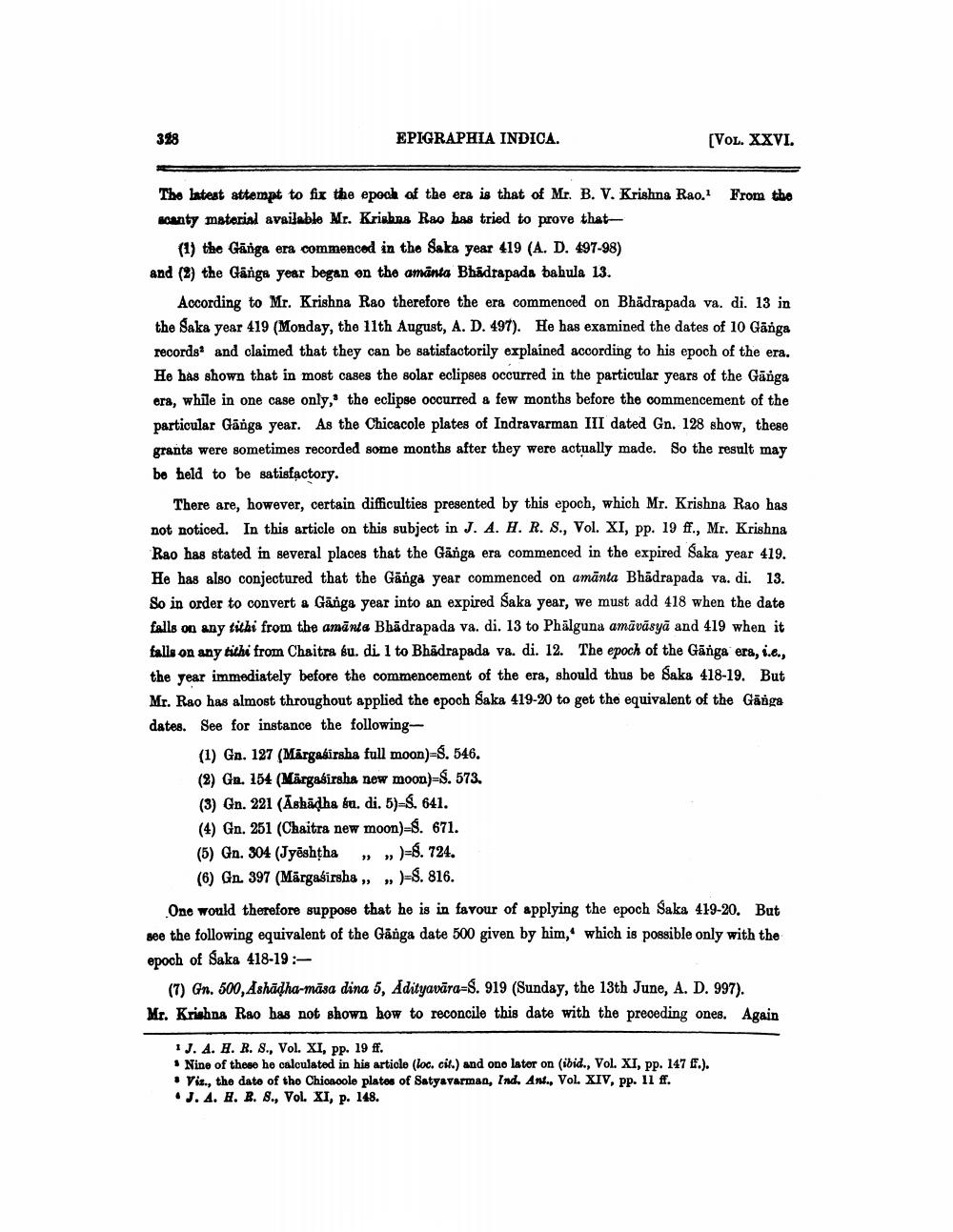________________
398
EPIGRAPHIA INDICA.
[Vol. XXVI.
The latest attempt to fix the epocha of the era is that of Mr. B. V. Krishna Rao. From the scanty material available Mr. Krishna Rao has tried to prove that
(1) the Ganga era commenced in the Saka year 419 (A. D. 497-98) and (2) the Ganga year began on the amänta Bhadrapada bahula 13.
According to Mr. Krishna Rao therefore the era commenced on Bhadrapada va. di. 13 in the Saka year 419 (Monday, the 11th August, A. D. 497). He has examined the dates of 10 Gānga records and claimed that they can be satisfactorily explained according to his epoch of the era. He has shown that in most cases the solar eclipses occurred in the particular years of the Gānga ers, while in one case only, the eclipse occurred a few months before the commencement of the particular Gängs year. As the Chicacole plates of Indravarman III dated Gn. 128 show, these grants were sometimes recorded some months after they were actually made. So the result may be held to be satisfactory.
There are, however, certain difficulties presented by this epoch, which Mr. Krishna Rao has not noticed. In this article on this subject in J. A. H. R. S., Vol. XI, pp. 19 ff., Mr. Krishna Rao has stated in several places that the Gānga era commenced in the expired Saka year 419. He has also conjectured that the Gänga year commenced on amānta Bhādrapada va. di. 13. So in order to convert a Gārga year into an expired Saka year, we must add 418 when the date falls on any tithi from the amänta Bhadrapada va. di. 13 to Phālguna amāvāsya and 419 when it falls on any tithi from Chaitra su. di 1 to Bhadrapada va. di. 12. The epoch of the Gānga era, i.e., the year immediately before the commencement of the era, should thus be Saka 418-19. But Mr. Rao has almost throughout applied the epoch Saka 419-20 to get the equivalent of the Ganga dates. See for instance the following
(1) Gn. 127 (Märgasirsha full moon)=$. 546. (2) Gr. 154 (Märgasirsha new moon)=$. 573. (3) Gn. 221 (Askādha tu. di. 5)-6. 641. (4) Gn. 251 (Chaitra new moon)-8. 671. (5) Gn. 304 (Jyēshtha „ „ )=8. 724.
(6) Gn. 397 (Mārgaśīrsha , , )-S. 816. One would therefore suppose that he is in favour of applying the epoch Saka 419-20. But see the following equivalent of the Gănga date 500 given by him, which is possible only with the epoch of Saka 418-19:
(7) Gn. 500, Ashādha-māsa dina 5, Adityavāra=S. 919 (Sunday, the 13th June, A. D. 997). Mr. Krishna Rao has not shown how to reconcile this date with the preceding ones. Again
1 J. A. H. R. S., Vol. XI, pp. 19 ff. · Nine of these he calculated in his article (loc. cit.) and one later on (ibid., Vol. XI, pp. 147 f.). • Viz.. the date of tho Chionoole plates of Satyavarman, Ind. Ant., Vol. XIV, pp. 11 ff. • J. A. H. R. 8., Vol. XI, p. 148.




